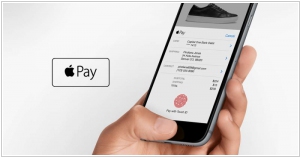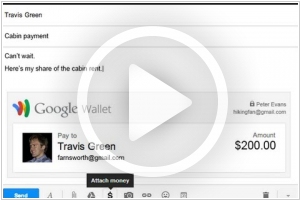Apple Pay vs Google Pay
June 04, 2023 | Author: Sandeep Sharma
13
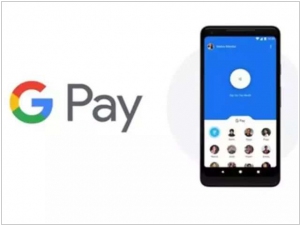
With Google Pay, you can simply unlock your phone like you normally do, place it near a merchant’s contactless terminal, and you’re good to go. Google Pay does all the heavy lifting. You don’t even need to open an app—just tap and go. You’ll also see a payment confirmation and get transaction details right on your phone.
Apple Pay and Google Pay are both popular mobile payment systems that enable users to make secure and convenient payments using their smartphones. However, they have some key differences in terms of device compatibility and integration.
Apple Pay is exclusively available on Apple devices, including iPhones, Apple Watches, and Macs. It utilizes Near Field Communication (NFC) technology to enable contactless payments. With Apple Pay, users can securely store their credit and debit card information on their devices and make payments by simply holding their device near a compatible payment terminal. Apple Pay also supports in-app and online purchases, providing a seamless payment experience across different platforms and apps.
On the other hand, Google Pay is compatible with a wider range of devices, including Android smartphones and Wear OS devices. It supports both NFC and online payments. Similar to Apple Pay, users can store their payment cards in the Google Pay app and make contactless payments at compatible terminals. Additionally, Google Pay allows users to make online purchases and send money to friends and family using their devices.
Both Apple Pay and Google Pay prioritize security by utilizing tokenization and encryption technologies to protect users' payment information. They also support loyalty card integration and offer additional features such as transaction history and receipt storage.
See also: Top 10 Online Payment platforms
Apple Pay is exclusively available on Apple devices, including iPhones, Apple Watches, and Macs. It utilizes Near Field Communication (NFC) technology to enable contactless payments. With Apple Pay, users can securely store their credit and debit card information on their devices and make payments by simply holding their device near a compatible payment terminal. Apple Pay also supports in-app and online purchases, providing a seamless payment experience across different platforms and apps.
On the other hand, Google Pay is compatible with a wider range of devices, including Android smartphones and Wear OS devices. It supports both NFC and online payments. Similar to Apple Pay, users can store their payment cards in the Google Pay app and make contactless payments at compatible terminals. Additionally, Google Pay allows users to make online purchases and send money to friends and family using their devices.
Both Apple Pay and Google Pay prioritize security by utilizing tokenization and encryption technologies to protect users' payment information. They also support loyalty card integration and offer additional features such as transaction history and receipt storage.
See also: Top 10 Online Payment platforms
Apple Pay vs Google Pay in our news:
2018. Android Pay becomes Google Pay
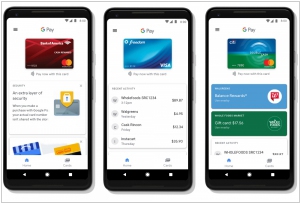
Google is consolidating its various payment tools into a unified platform known as Google Pay. The company is introducing the Google Pay app for Android, accompanied by new features aimed at establishing the payment service as widely accessible in both physical stores and online environments. The Google Pay home screen now displays nearby stores where Google Pay is accepted, providing users with relevant payment options. Furthermore, Google is launching a revamped version of the Google Wallet app, now renamed as Google Pay Send, which offers enhanced capabilities for sending and requesting money.
2016. Apple takes on PayPal with Apple Pay on the web
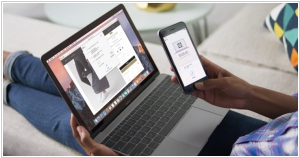
Apple has announced that Apple Pay will be introduced to the web in the upcoming fall. This means that Mac users will have the convenience of making online payments in Safari using the "Pay with Apple Pay" button. To authenticate their purchases, users can utilize Touch ID on their iPhone or Apple Watch. Previously, Apple Pay was only available for use in selected iOS apps and physical retail stores. Retail partners will be required to integrate Apple Pay into their checkout process, and Apple has already secured numerous merchants for the payment platform, including Target, Expedia, United Airlines, and more. In addition to this expansion, Apple has revealed plans to launch Apple Pay in Switzerland, France, and Hong Kong during the summer season.
2015. Apple rebrands Passbook to Wallet extends Apple Pay to UK
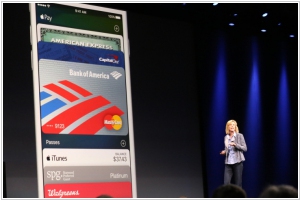
To align with the updated Apple Pay service, Apple has made the decision to rebrand the Passbook app as Apple Wallet. This name change aims to ensure relevancy and coherence between the two offerings. In addition to the ability to add traditional debit and credit cards, Apple Pay now enables users to include store cards, as well as loyalty and rewards cards, within the Apple Wallet. Retailers such as Kohl's, JC Penney, and BJ's will be among the first to offer compatibility with their own store credit cards through the Apple Pay platform. Moreover, Kohl's, Walgreens, and Dunkin Donuts are introducing rewards cards to the Apple Pay ecosystem. Notably, Apple Pay is expanding its reach to the United Kingdom, where it will soon be compatible with a vast majority of debit and credit cards, covering approximately 70 percent of the country's cards. Additionally, Apple has recently unveiled a partnership with Square, introducing a new card reader specifically designed for small businesses to accept payments via Apple Pay and credit card chip transactions (without support for card swipes).
2015. Google launched Android Pay in US
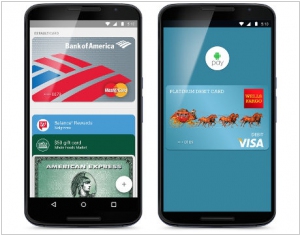
Google has introduced Android Pay, a service that enables users to make payments with a simple tap, whether in applications or physical stores. This new service also incorporates rewards programs for loyal customers. As for the existing Google Wallet service, it will undergo a transformation, serving as a platform for peer-to-peer money transfers, similar to Venmo or Square. Google is striving to catch up with Apple Pay, which made its debut in September 2014. One notable distinction between Google's latest offering and its initial payment product lies in the partnerships that have been forged. American Express, Visa, Mastercard, and Discovery are among the companies supporting Android Pay. Additionally, the system is compatible with over 700,000 stores in the United States that accept "contactless payments," as well as various applications from different companies.
2015. Google Wallet integrates with Shopify and other merchant platforms
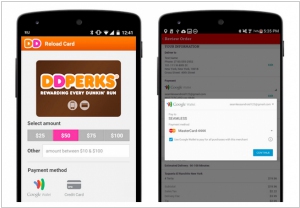
Google Wallet, the mobile payment system, is introducing significant integrations with merchants and merchant platforms. Users of Android apps from Dunkin' Donuts and Seamless, as well as merchants utilizing the Shopify platform to build online stores, can now leverage Google Wallet for seamless payment transactions. In November, Google Wallet also integrated with Papa John's Android app, along with merchant platforms ChowNow and Shopgate. However, the expansion of Google Wallet has been relatively gradual. Prior to this development, only around 30 mobile sites and 30 apps were integrated with the service. Currently, Google Wallet's payment services are available exclusively to users and businesses in the United States. Nevertheless, the company has recently commenced the international extension of another aspect of Wallet—money transfers—to markets beyond the U.S., enabling Gmail users in the UK to access this feature.
2015. Google acquired Softcard to power its Wallet
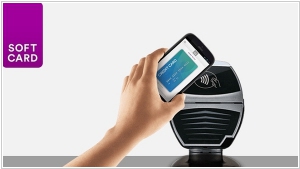
Following Samsung's acquisition of LoopPay to challenge Apple Pay's dominance in the mobile payments space, Google has also taken a significant step. It has announced the acquisition of technology from the mobile payments app Softcard. Additionally, Google Wallet will soon come pre-installed on Android phones offered by three out of the four largest U.S. carriers later this year. Similar to Google Wallet and Apple Pay, the Softcard app relies on near-field communications (NFC) for its mobile payment functionality. Google Wallet enables users to make purchases at physical retail stores by simply tapping their phones on contactless payment terminals. Despite being introduced prior to Apple Pay, Google's NFC payments system did not achieve the same level of visibility, despite receiving positive reviews.
2014. Apple launched own payment system Apple Pay
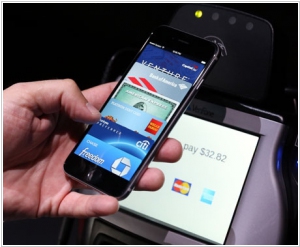
Apple has introduced a wallet feature called Apple Pay to its iPhones. This functionality allows users of iPhone 6 and iPhone 6 Plus to conveniently make payments at retail checkout terminals by simply tapping their devices. To utilize the wallet service, users must have an iPhone equipped with near field communication (NFC) technology and authenticate their transactions using Apple's Touch ID fingerprint authentication. The process of adding a card to Apple Pay involves either scanning the card or manually inputting the card information. Initially, Apple Pay supports purchases at over 220,000 stores across the United States. Prominent participants in this service include Macy's, Bloomingdales, Walgreens, Duane Reade, Subway, and McDonald's. However, it's important to note that many retailers, including the largest one, Wal-Mart Stores Inc., are not currently part of Apple's network. Only a minority of retailers have the necessary machines capable of reading the near-field communication radio signal required for Apple Pay to function.
2013. Google integrates Wallet into GMail
Google Wallet was introduced a few years ago as an innovative offline payment service for smartphone users in physical stores. However, this approach did not gain significant traction, even in the United States, due to the limited availability of NFC-enabled smartphones among users and the scarcity of NFC-compatible terminals in stores. Nonetheless, Google decided to retain the promising name by integrating Google Wallet with its online payment service, Google Checkout. As a result, Google Checkout will be phased out, and Google Wallet will become the sole payment service offered by Google. It may come as a surprise, but if you have ever made a purchase on the Play Market, whether it's an app or a book, you already have a Google Wallet account. In the near future, you will likely have the ability to send and receive money to/from other Google Wallet users, similar to PayPal. This can be accomplished simply by sending an email from your Gmail account and attaching the desired amount (as demonstrated in the video). Initially, this feature will be available exclusively in the United States.
2011. Google Wallet: How it works
Today, Google has launched a new service - Google Wallet, which allows to pay for goods in stores with the help of a smartphone. Of course, it's more the future than the present technology even in US. But it's interesting to see how we'll pay in the future. For a user Google Wallet is a mobile application that is installed on a smartphone. In this application you enter your bank card details (or get a card directly from Google) and add your loyalty cards. Then, with your smartphone you go to the store and when approaching the point of sale, launch the Google Wallet application, enter your PIN-code, select a card, tap the terminal with your smartphone, and ... your money fly to the retailer. ***

